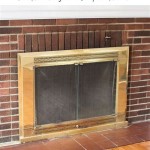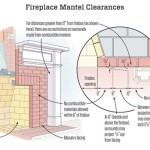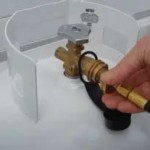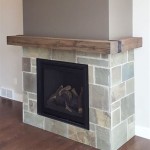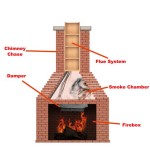Arizona Freestanding Steel Wood Burning Fireplace With Chimney Chimenea: A Comprehensive Overview
The Arizona freestanding steel wood-burning fireplace with chimney, often referred to as a chimenea, represents a popular outdoor heating and decorative solution. Its design, function, and material composition contribute to its appeal for various outdoor settings. This article aims to provide a detailed examination of this fireplace type, covering its features, benefits, considerations for use, and typical applications.
The defining characteristic of the Arizona chimenea is its freestanding nature. This eliminates the need for permanent installation, offering flexibility in placement. The use of steel as the primary construction material ensures durability and heat resistance, allowing for safe and efficient wood burning. The integrated chimney facilitates the upward redirection of smoke, enhancing user comfort and minimizing potential hazards associated with smoke inhalation.
Design and Functionality
The typical design of an Arizona freestanding steel chimenea incorporates a bulbous body that serves as the fire chamber. This chamber is usually elevated on a stand or legs, providing stability and preventing direct contact with the ground. A wide mouth allows for easy access for loading wood and tending to the fire. The chimney, extending upwards from the main body, is crucial for directing smoke away from the immediate vicinity.
Functionally, the chimenea operates by containing and efficiently burning wood to produce heat. The steel body radiates heat outwards, providing warmth to those nearby. The chimney plays a vital role in drawing air into the fire chamber, promoting combustion, and channeling smoke upwards. Some models incorporate features such as a spark screen to prevent embers from escaping, as well as a door to control airflow and the intensity of the fire.
The interior design influences combustion efficiency. Some chimeneas feature a grate at the bottom of the fire chamber, allowing for better airflow beneath the fire and facilitating ash removal. The overall shape also contributes to heat radiation. The bulbous design helps to reflect heat outwards, maximizing its effectiveness in warming the surrounding area.
The height of the chimney is another important design consideration. A taller chimney generally provides better draft, which is necessary for optimal combustion and smoke control. However, excessively tall chimneys can be less stable in windy conditions. Therefore, the chimney height is typically balanced to optimize both performance and stability.
Aesthetics are also a crucial design element. Arizona chimeneas are often designed with decorative elements, such as intricate cutouts, embossed patterns, and various finishes. These features contribute to the visual appeal of the fireplace, making it an attractive addition to outdoor spaces. The finish must be heat-resistant to maintain its appearance despite high temperatures.
Material Composition and Durability
The primary material used in the construction of the Arizona freestanding steel chimenea is steel. Steel is selected for its strength, heat resistance, and ability to be formed into complex shapes. Different types of steel may be used, each with varying properties. For example, thicker gauge steel offers greater durability and resistance to deformation under high heat.
The steel is often treated with a high-temperature paint or coating to protect it from rust and corrosion. This coating is critical for extending the lifespan of the chimenea, particularly in outdoor environments where it is exposed to moisture and the elements. The coating must withstand repeated heating and cooling cycles without peeling or cracking.
The chimney component is also constructed from steel, often with a slightly different gauge or coating depending on its specific function. The chimney must be able to withstand direct exposure to hot exhaust gases and soot. Some models may incorporate a stainless-steel chimney liner for added durability and corrosion resistance.
Smaller components, such as the grate, spark screen, and door hinges, may be made from other materials, such as cast iron or stainless steel. These materials are chosen for their ability to withstand high temperatures and repeated use. The quality of these components can significantly impact the overall lifespan of the chimenea.
The base or legs of the chimenea are also typically constructed from steel, providing a stable and robust foundation. The design of the base is crucial for preventing the chimenea from tipping over, particularly on uneven surfaces. Some models feature adjustable feet to ensure stability on various terrains.
Material thickness contributes to the overall heat retention and durability. Thicker steel will retain heat for longer periods, providing more sustained warmth. It also makes the chimenea more resistant to dents and other damage. However, thicker steel also adds to the overall weight, making it more challenging to move.
Benefits and Considerations for Usage
The benefits of using an Arizona freestanding steel chimenea include its portability, ease of use, and aesthetic appeal. Its freestanding design allows it to be moved and positioned as needed, making it suitable for various outdoor settings, such as patios, decks, and gardens. It provides a focal point for outdoor gatherings and adds ambiance to any space.
Using the chimenea is relatively simple. The user loads wood into the fire chamber, ignites it, and tends to the fire as needed. The chimney efficiently directs smoke upwards, minimizing discomfort for those nearby. The intensity of the fire can be controlled by adjusting the airflow, either through a door or by adjusting the amount of wood added.
Safety is a primary consideration when using a wood-burning chimenea. It should be placed on a non-combustible surface, such as concrete or stone, away from flammable materials, such as trees, bushes, and furniture. A fire extinguisher or water source should be readily available in case of emergencies. The chimenea should never be left unattended while a fire is burning.
Maintenance is also essential for ensuring the longevity and safe operation of the chimenea. Regular cleaning of the fire chamber and chimney is necessary to remove ash and soot buildup. This prevents obstructions that could impede airflow and increase the risk of a chimney fire. The exterior should be periodically cleaned and re-coated with heat-resistant paint to prevent rust and corrosion.
Local regulations regarding outdoor burning should be consulted before using a wood-burning chimenea. Some areas may have restrictions on open fires or may require permits. It is important to comply with all applicable regulations to avoid fines or other penalties. Consideration should be given to neighbors and the potential impact of smoke and noise.
Selecting the right type of wood is crucial for efficient and safe operation. Seasoned hardwood, such as oak or maple, burns cleaner and produces less smoke than softwood. Avoid using treated or painted wood, as these materials can release harmful chemicals when burned. The size of the wood pieces should be appropriate for the size of the fire chamber.
Wind conditions can significantly impact the performance and safety of the chimenea. Strong winds can cause embers to be blown out of the chimney, increasing the risk of a fire. It may be necessary to reposition the chimenea or postpone use during windy conditions. A spark screen can help to contain embers and reduce the risk of fire.
Proper storage is important when the chimenea is not in use. It should be stored in a dry location to prevent rust and corrosion. A cover can be used to protect it from the elements. Before storing the chimenea, ensure that all ash and embers have been completely extinguished and removed.
Choosing the right size of chimenea is also important. A larger chimenea will produce more heat, but it will also require more wood. A smaller chimenea may be more suitable for smaller spaces. Consider the size of the area to be heated and the typical number of people who will be using the space.
The overall cost of ownership should be considered. In addition to the initial purchase price, there are ongoing costs associated with purchasing wood, maintaining the chimenea, and potentially replacing parts. These costs should be factored into the decision-making process.

Callow Arizona Freestanding Steel Fireplace With Chimney Garden Chic

Buy Callow Black Garden Arizona Freestanding Steel Wood Burning Fireplace With Chimney From The Next

Garden Chimeneas Street

Clihome Outdoor Wood Burning Fire Pits 18 In W Black Iron Pit The Department At Com

Ecosmart Fire Ghost Designer Bioethanol Glass Freestanding Fireplace Expertfires

Chimineas Cast Iron And Steel Fire Pits For Quality Living

Wood Fireplaces Fireplace Kits Free Patio Outdoor Furnishings

51 57 In H Iron Wood Burning Outdoor Fireplace With Chimney And Included Grate Wheels Bg02paradise1 The Home Depot

Chimineas Outdoor Heating Cooking Eating Garden Patio Pic

Outdoor Firepits Fireplaces Gas Propane Wood Fire Pits Rockford Chimney
Related Posts

